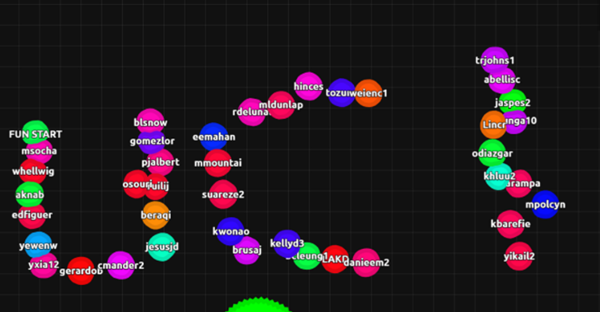Samueli School Professors Pull Off Home Version of Experiential Learning

July 1, 2020 - When spring quarter abruptly transitioned to online learning in March due to the COVID-19 pandemic, Samueli School professors, teaching assistants and lab managers had to quickly adjust. They pulled together to ensure continuity in providing students a quality academic experience that still incorporated a hands-on approach to learning.
In the Department of Mechanical and Aerospace Engineering, laboratory technician Derek Irwin compiled and mailed out over 400 lab kits for students in Mark Walter’s Mechanics of Structures and David Reinkensmeyer’s Mechanical Systems classes. In the Department of Civil and Environmental Engineering, laboratory manager Sergio Carnaila created instructional videos for Farzin Zareian’s Mechanics of Materials class.
In Reinkensmeyer’s class, mostly junior-level students learned how to model and control circuits and mechanical systems, and then designed and simulated a robotic vehicle. Irwin mailed 284 lab kits to the students so they could conduct experiments at home. These kits included an Arduino microcontroller, various sensors, a servomotor, wire cutters/strippers, a breadboard, a jumper wire kit and multimeter. The home experiments ranged from learning how to acquire data from sensors like magnetometers and accelerometers using a microcontroller, to building a robotic head that could rotate and "see" by moving its "eyes." Students created video logs to show what they accomplished.

For the final project, students designed, constructed and programmed their own video game controller out of sensors and a microcontroller. They then used it to operate a simulated robotic vehicle in a multiplayer online game. In this game, students made their robots eat “viruses” while trying to avoid being eaten by other robots. They competed to see who could best control their robot to win the game.
“While almost all students still say they would have preferred to take this class in person, they also say that they found the online course motivating and engaging, and that they learned a lot,” said Reinkensmeyer, professor of mechanical and aerospace engineering, who was recognized for his efforts in this class by UCI’s Greek life as a faculty favorite in May.
In Walter’s class, mostly sophomore-level students were taught how to make measurements of stress and strain for analyzing the deformation and failure of materials. Irwin put together and mailed 134 “Home Bending” lab kits that included rulers made of three different materials – stainless steel, plastic and wood – a digital caliper, string, rubber bands and a C-clamp. With these items, students were able to make measurements and compare them to theoretical measurements from their textbooks.
“There are always challenges with anything new, especially with hands-on assignments. Overall I’m happy we were able to put together some old and lots of new content in a meaningful way,” said Walter, professor of teaching.
In Zareian’s class, students learned the experimental methods and fundamentals for analyzing the mechanics of materials. Carnaila created scores of videos to show students how to use the equipment, set up tests and conduct experiments. The first few experiments included axial tension, compression and torsion tests. These tests were designed to helped students identify material properties (i.e., identify the modulus of elasticity and rigidity) and construct stress-strain diagrams. The second part of the course was comprised of experiments on simple components – riveted joints, simply supported beams and slender columns. All the tests involved multiple cameras and multiple takes to ensure that high-quality instruction was delivered to the students.
Zareian took measures to minimize academic dishonesty and tailored course assignments for each student individually. The final experiment was a shake-table test, where students learned the basics of structural dynamics, the gateway to earthquake engineering.
“What we did not expect was a somehow enhanced student experience compared with the previous quarter, where we had in-person labs,” said Zareian, professor of civil and environmental engineering. “Minus being able to conduct the experiments in-person, the neat videos, detailed explanations, multiple cameras and the ability to watch the labs multiple times was something students didn’t have in previous years.
“Our interaction with students during the 10 weeks and afterward showed they were surprised at how well we made this happen,” said Zareian, who further explained, “We are engineers, so we adapt to the constraints and parameters at hand and deliver a high-quality product.”
– Lori Brandt
